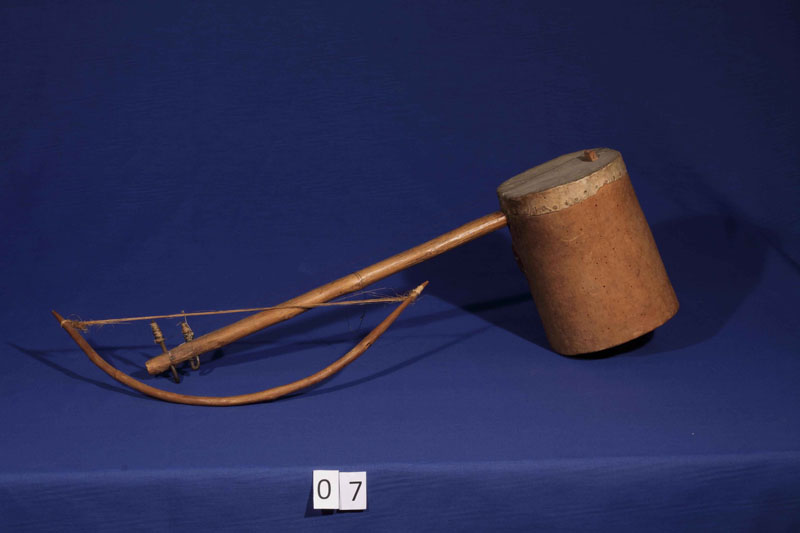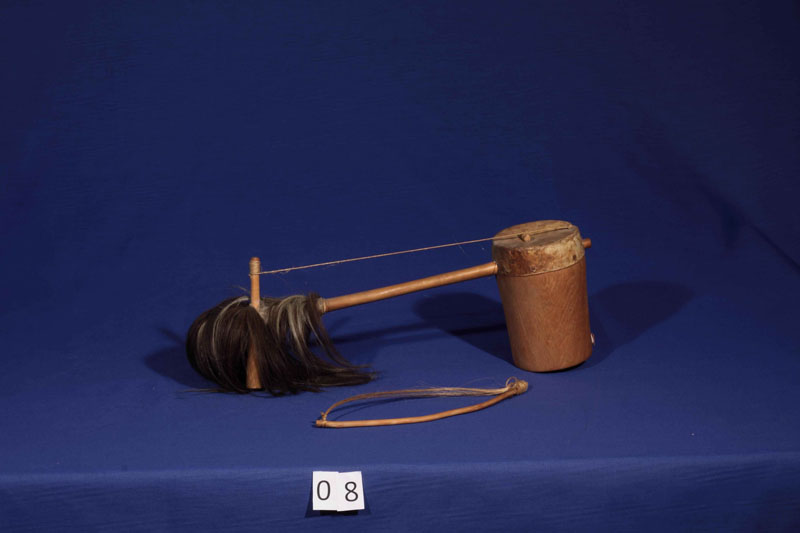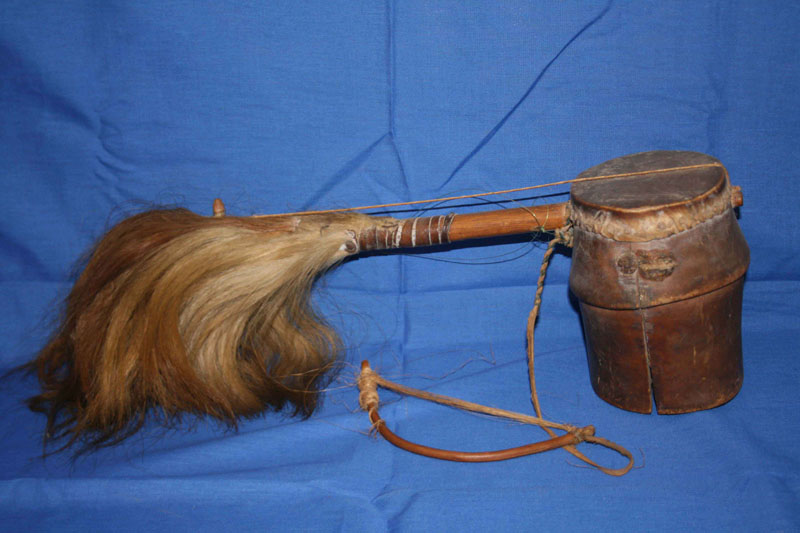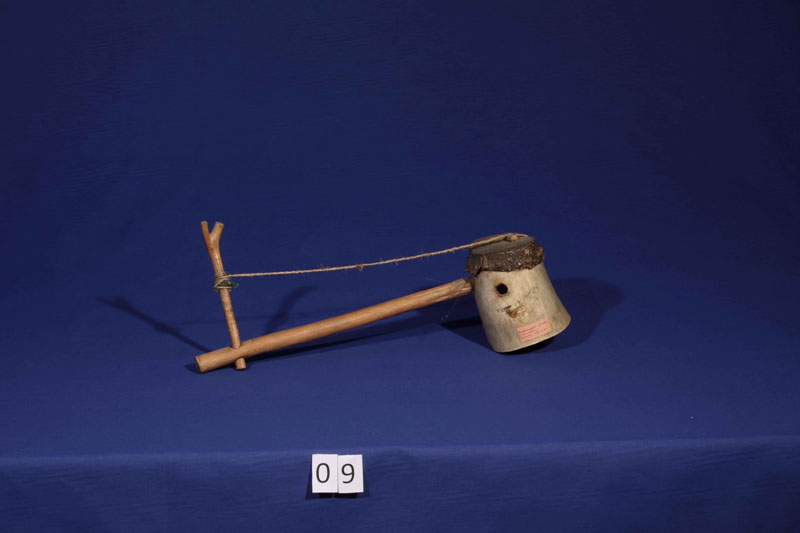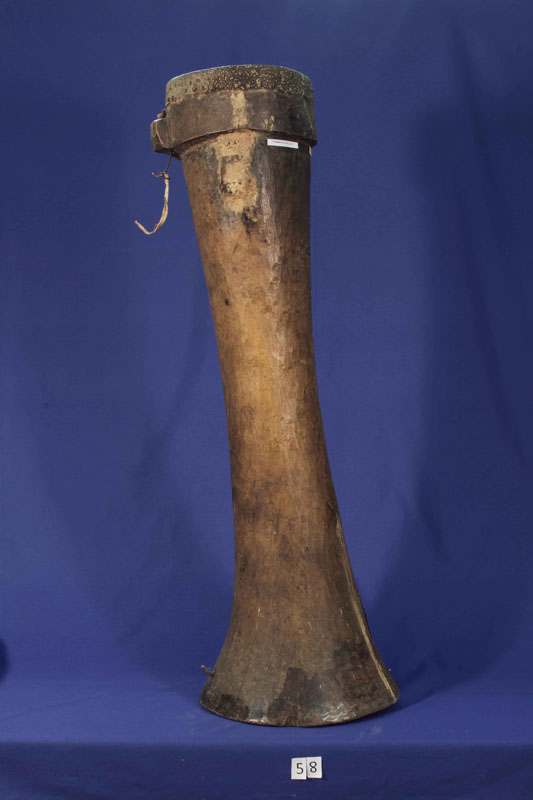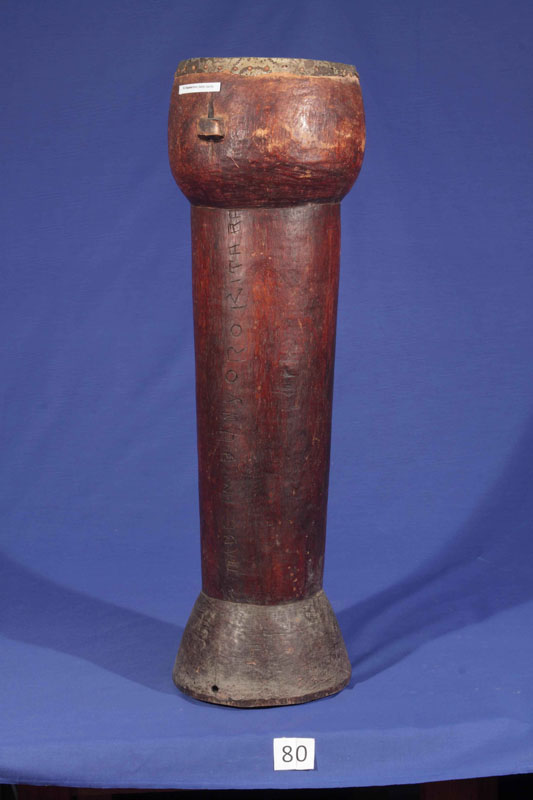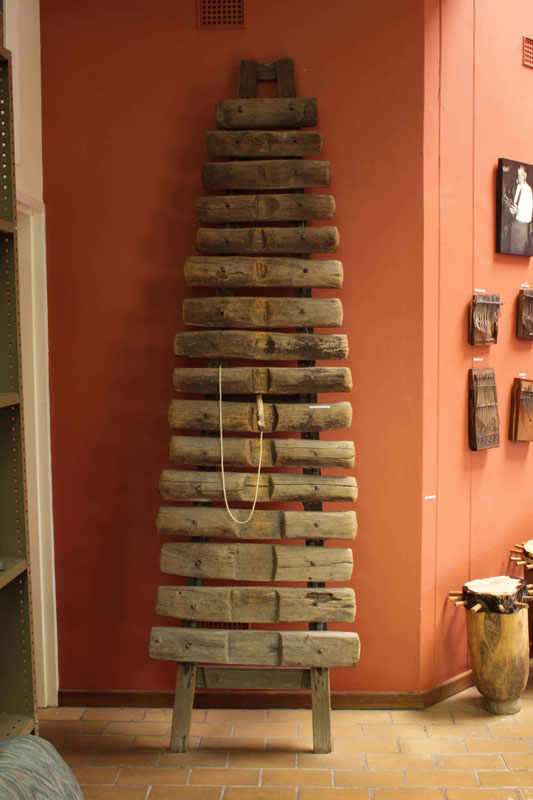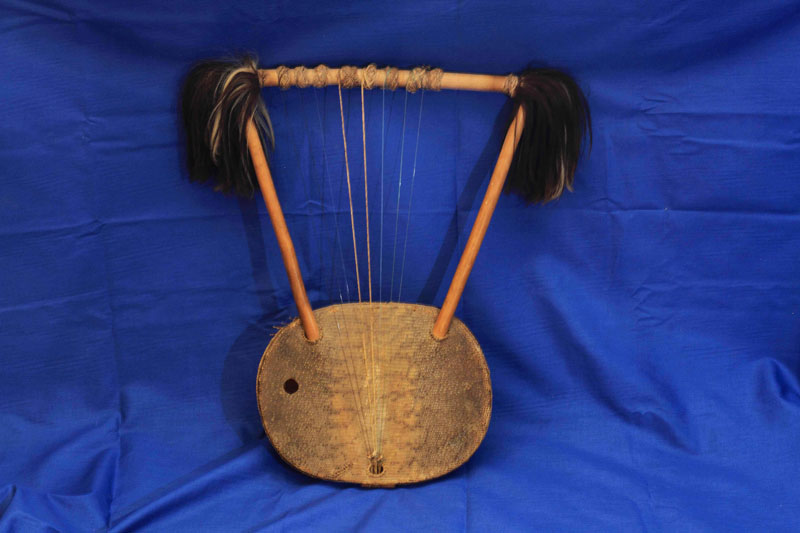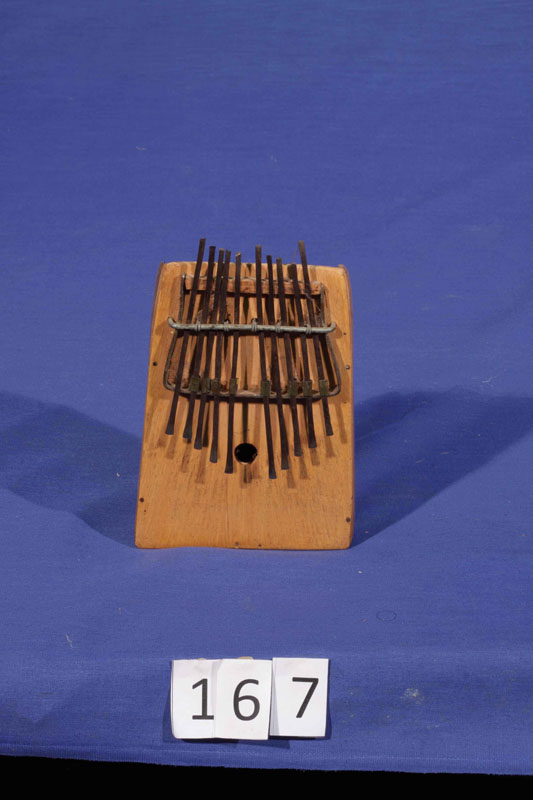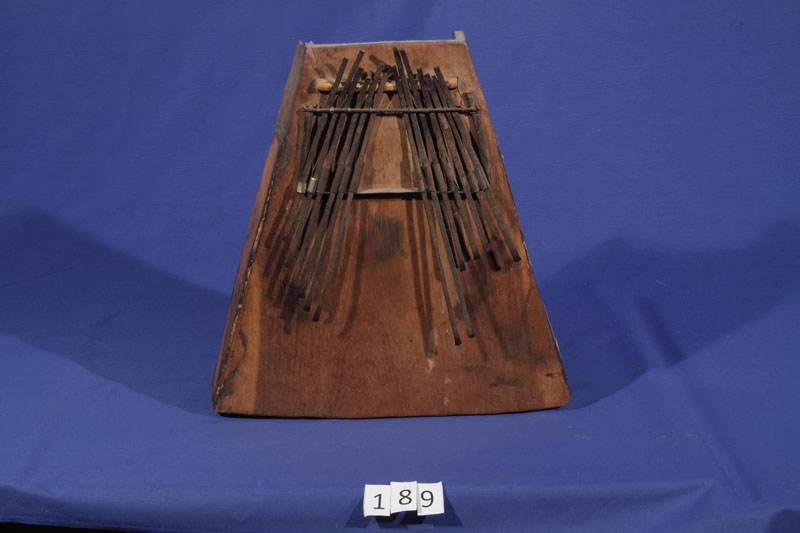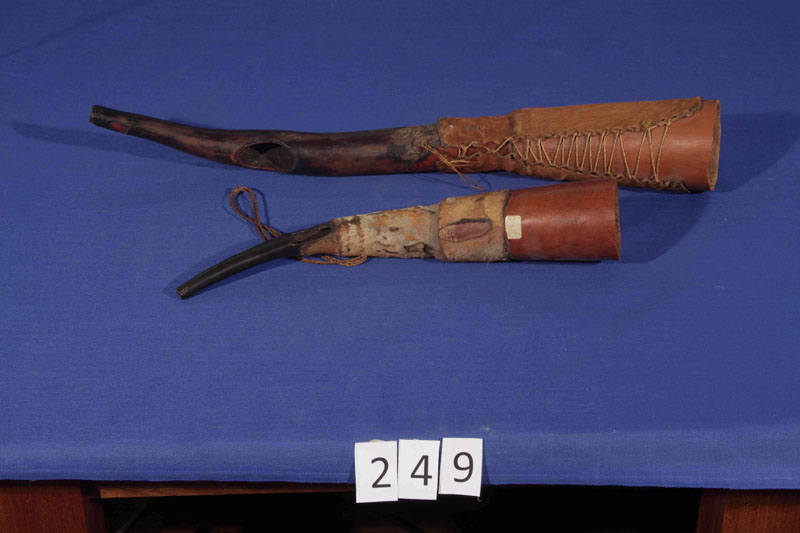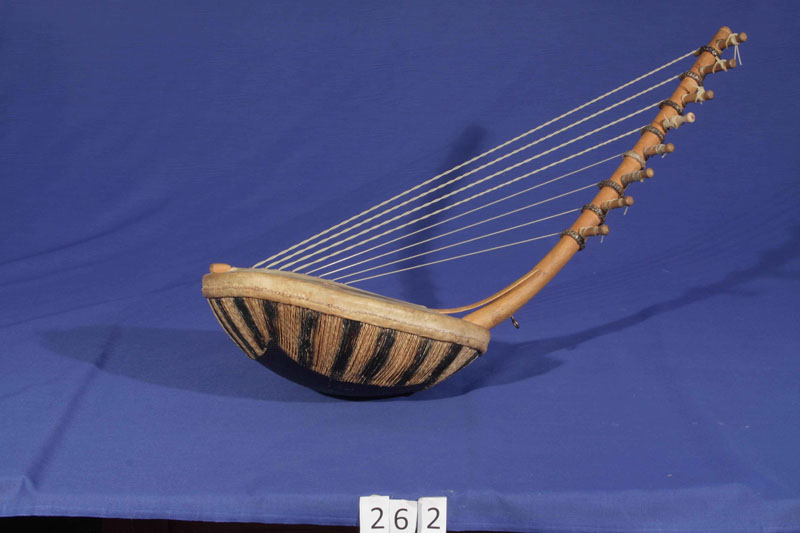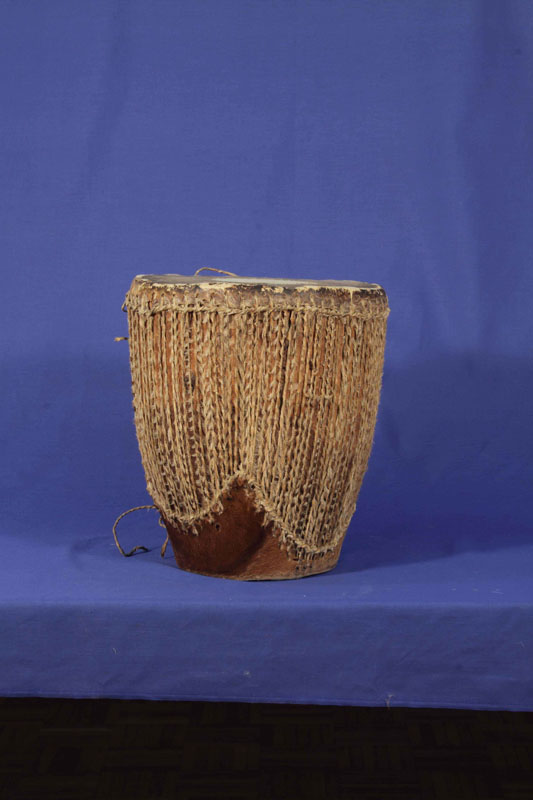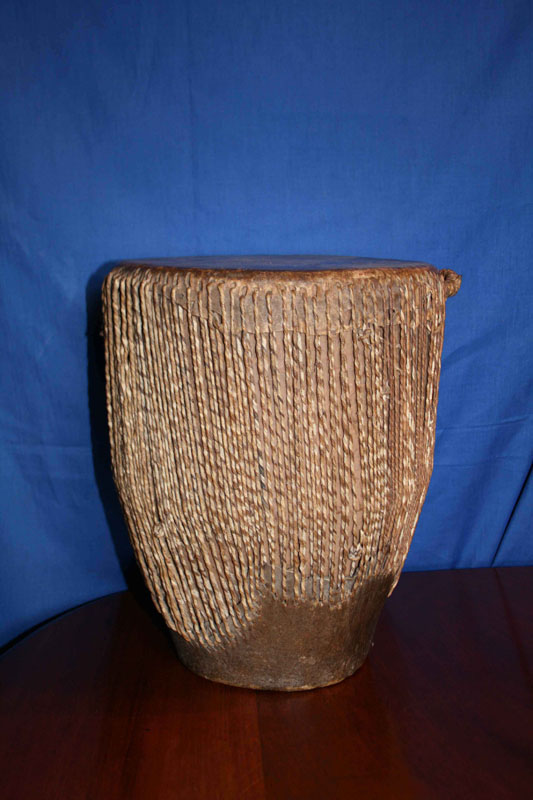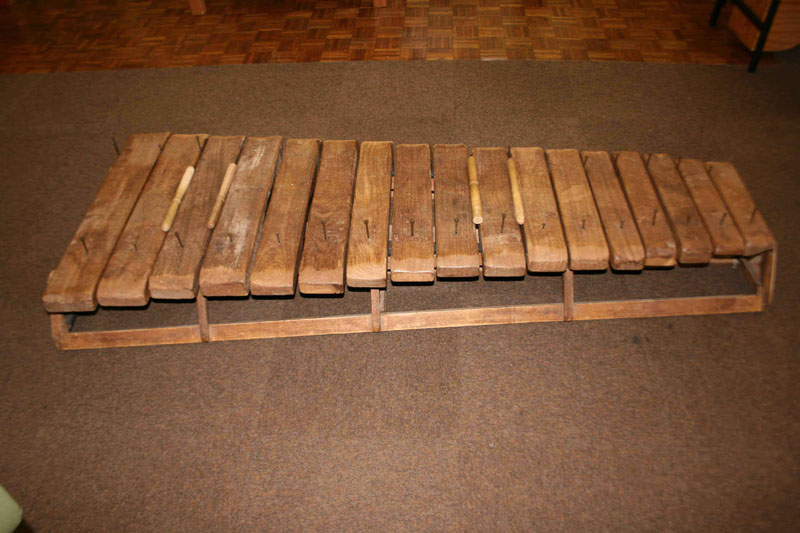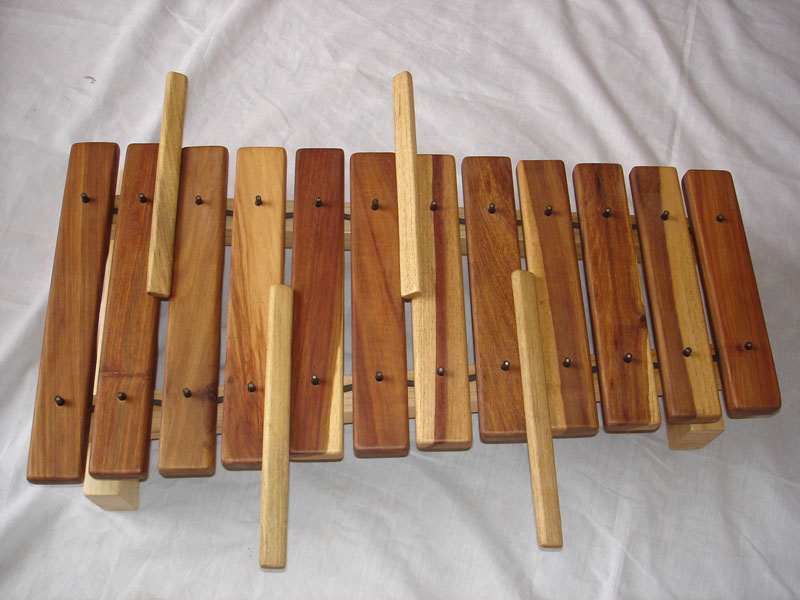The International Library of African Music (ILAM) has very kindly shared with us their instrument collection, enabling us to give you a wider insight into the traditional instruments used in Ugandan folk music. Here at Singing Wells, we have already began building up our own collection, purchasing and bringing them back to our studio in England whenever we can, and have been providing profiles for those we come across on our travels on the Instrument section of our website. ILAM houses the extensive instrument collection owned by the Tracey family, who have built on the legacy their father, Hugh Tracey created; more information on the ILAM and Hugh Tracey himself can be found on the History of Archivists of East African Music (coming soon).
Siilili bowed lute
This is a lute of the Gishu (also known as Gisu or Bagisu) people, who mainly live in the Mbale district of Eastern Uganda, on the slopes of Mount Elgon. The skin stretched across the cylinder is held with small pegs and two metal strings go over the wooden bridge, with nails as tuning pegs.
We recorded the Elgon Ngoma Troupe, who are part of the Bagisu people. Here they are performing their pre-circumsicion ritual – something that the Bagisu people are known for.
Endingidi bowed lute
This lute is slightly smaller and of the Ganda people. It has only one string, made of twisted fibre. The first and second version are more decorative; the tufts of what looks like hair that can be seen on the peg side is the fur of the colobus monkey.
Here is the Bukaala Twesitule Troupe, of the Ganda people, who we recorded at the Kyambogo University, Kampala, Uganda. The men on the left can be seen to be playing what look like the more simple version of the Endingidi bowed lute.
Engalabi drum
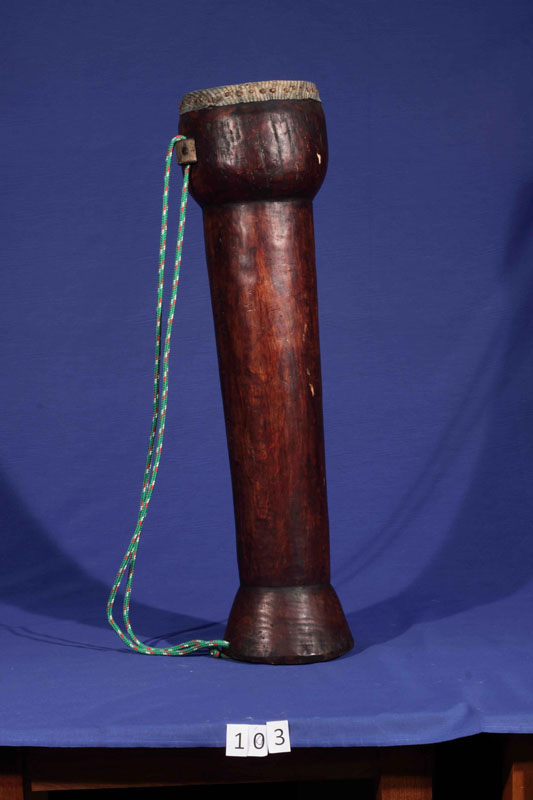
These were collected by Hugh Tracey in the 1950s and are from the Nygoro people. Notes on the drum provided by ILAM state that it ‘plays the lead in several drum ensembles among Bantu speakers in the southern part of Uganda. Sharp crackling sound contrasts with warmer cowhide sound of the laced ‘Uganda drums’.’ It is made from legavaan, or rock monitor (a large type of lizard found in South Africa), skin which gives it the ‘crackling’ sound. The legavaan is now actually endangered in Uganda, as it is demanded so much for drums, lyres and fiddles.
Endara log xylophone
The xylophone is 263.5cm long, made up of 16 roughly cut keys and tuned to a pentatonic scale. It is played using one beater, which is attached to the xylophone by string and can be played by up to five people at one time. This frame was actually made by Hugh Tracey, after he collected it in 1950, though the original frame was made of two banana stalks with loose keys, not attached by nails. It is also of the Nygoro people.
Endongo Lyre
The endongo is a type of lyre that can be found in many variations throughout East Africa and is considered the national instrument of the Baganda people. It is specially a Kiganda bowl lyre, with the face of the bowl covered with the skin of legavaan and laced to cow hide at the back. Klaus Wachsmann speculates that the instrument came to Uganda with the Luo people from Sudan in the late 15th and early 16th centuries, and, after passing through the Basoga people, reached the Bagandan Kings. Originally the strings of this lute would have been made of twisted skin, but these have been replaced by nylon. Below you can see how the nylon has been twisted on a similar endongo to replicate the sound produced by the twisted animal skin.
Endongo Mbira
The endongo mbira is part of the likembe family. We have been lucky enough to witness many fine players of the likembe on our trips to Uganda, such as the Rubanga Kingom Awach Boys and the Macedonia Band. However, both of these groups are Acholi, whereas the Endongo Mbira comes from the Baganda people. This mbira was collected by Andrew Tracey in 1996 and has 10 keys.
Budongo Mbira
This mbira is of the Basoga people, again part of the likembe family of instruments. It has thirteen keys, tuned to the pentatonic scale, and one larger note on the right in the likembe style. It was collected by Hugh Tracey in around 1950. See the mbira in action below, as we recorded the Nile Beat Artists, a traditional Basoga ‘orchestra’.
Engwara Composite Horns
These horns are composite because they are made up from two different calabashes – one wrapped in skin and the other wrapped in goat skin and string. The Tracey Instrument Collection holds two horns, which are part of the Omukama of Bunyoro‘s horn ensemble of at least six horns, that were collected in the 1950s by Hugh Tracey. The Omukama of Bunyoro is the titular head of the Banyoro people.
Ennanga eight string harp
This harp is unusual in the sense that the neck does not pierce the body of the resonator, but rather rests on the inside of it – like the earliest Ancient Egyptian harps – with the cowhide that stretches over the top of the resonator used to keep it in place. Written on the side of the skin of this ennanga is ‘SSENDEGGE’ which may be the name of the actual maker of the harp, but the harp was obtained by the Traceys by the renowned ennanga player Evaristo Muyinda. The ennanga was formerly the instrument played by the master of music of the Kabaka (King) of the Bugandan people. He would compose songs on it and then transfer the songs to the other royal bands who served the Kabaka. Below, Albert Junior, one of the three only masters of the ennanga, leads a song about a servant who had his fingers cut off for trying to play with the princess.
Ugandan-style laced drum
This style of drum is typical of Ugandan drums. The body is made from wood with animal skin stretched over the top and bottom and then laced together. See similar drums in action with a Magic Moment from the Namaddu Troupe…
Amadinda loose-note xylophone
The first xylophone pictured has 17 keys and the second has 12, and were both made by Andrew Tracey to replace the endara log xylophone (above) which stood outside the ILAM building as it was wearing from student use. The xylophones are played on the ends by three players in the amadinda style or three to six players in the akadinda style. Amadinda xylophones typically have 12 keys and were historically an instrument that could only be played in front of the King of Buganda.

